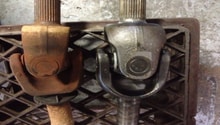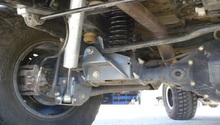Jeep Wrangler JK: How to Replace Rear Wheel Bearings
The rear wheel bearing takes up the space between the axle shaft and wheel hub. It must stay lubricated as it rotates inside the axle shaft housing, otherwise damage will quickly result. Replacement takes some time and some specialized equipment is needed.
This article applies to the Jeep Wrangler JK (2007-Present).
The rear wheel bearing reduces the friction between the axle shaft and and wheel hub. High amounts of heat are generated here as the vehicle moves down the road at highway speeds. Grease packed into the bearing during assembly keeps the friction at a minimum and counteracts the wear that would otherwise result in excessive play. An impact with a hole in the road can damage the bearing, as well. A faulty wheel bearing is most often noticed by the growling sound it creates. This sounds becomes louder as vehicle speed increases.

Materials Needed
- Impact wrench (optional)
- Sockets (5/16", 3/4" or 19mm, 18mm)
- 1/2" and 3/8" ratchet
- Wheel chocks
- Floor jack
- Jack stands (x2)
- Hammer
- Needle nose pliers
- Flat head screwdriver
- Slide hammer with wheel hub attachment (optional)
- Pry bar (optional)
- 1/2" torque wrench
- Shop press
- Rear axle bearing kit
Step 1 – Raise and remove the rear wheels
Place wheel chocks in front of and behind one of the front wheels. If you don't have an impact wrench capable of removing lug nuts, loosen the lug nuts one full turn before raising the wheels off the ground. Move the pad of a floor jack below one of the rear jacking points and raise it high enough to place a jack stand beside the pad on the jacking point. Lower the vehicle weight onto the jack stand and remove the rear wheels with a 3/4" or 19mm socket.
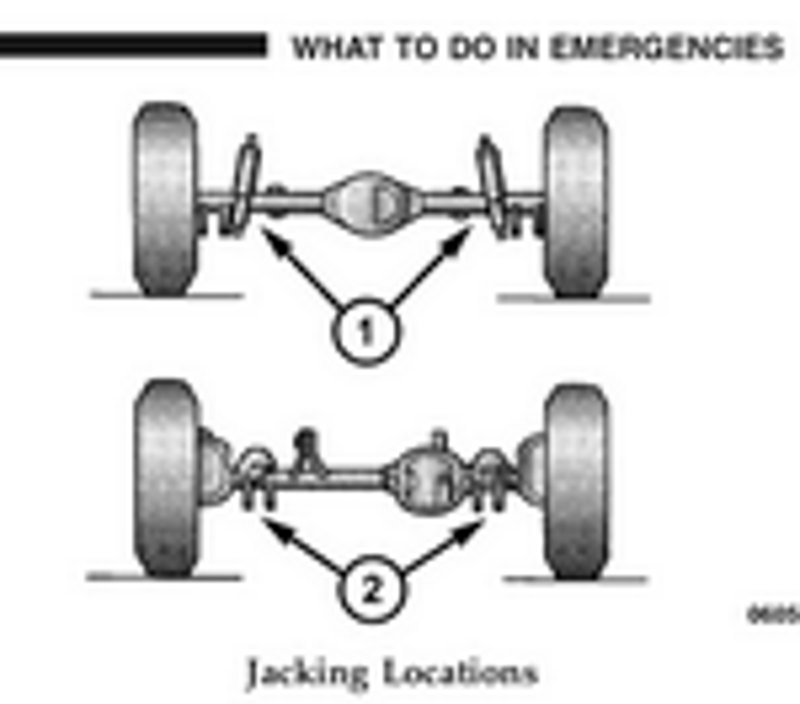
Step 2 – Remove caliper and bracket from wheel hub
Two bolts hold the caliper bracket to the wheel hub. These bolts will be tight. You may need a breaker bar with an 18mm socket and penetrating fluid. Don't let the caliper bracket hang by the rubber brake hose. Hang the bracket from a coil spring with a piece of wire.
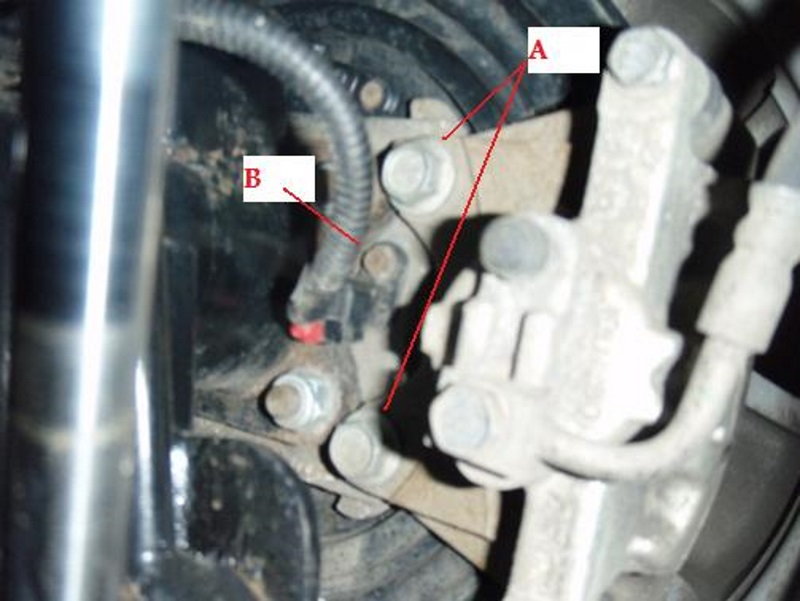
Step 3 – Remove the rotor
The rotor simply slides off the wheel studs. It may be stuck in place. If so, lightly tap the "hat" of the rotor with a hammer (inside portion) to un-seize it.

Step 4 – Remove emergency brake cable eye loop
Behind the brake backing plate you will see where the emergency brake cable connects to the brake hardware inside the hub assembly. Remove the cable from the hook on the axle tube by pulling downwards. Using pliers, remove the hook end of the cable by twisting and pulling it out of the eye loop.

Step 5 – Disconnect wheel speed sensor
The wheel speed sensor is on the backside of the hub assembly near the emergency brake cable eye loop. It's labeled "B" in Figure 2. Remove the bolt holding the sensor to the hub with a 5/16" socket. Carefully pull the sensor out of the hub. A small flat head screwdriver or pick can be used to pry the sensor free.
Step 6 – Remove wheel hub/axle shaft flange
Begin removing the axle shaft flange by removing the four 18mm nuts holding the axle shaft backing plate to the housing. As you begin to remove the shaft, some differential fluid may leak from the axle tube. Raise the axle tube above parallel to the ground to prevent this. To remove the axle shaft from the axle tube, you'll need to pull outward on the axle shaft hub flange. This can be done by hand, with a slide hammer, or a pry bar. Be careful not to damage the tone wheel teeth. Pry in multiple positions against the hub flange to reduce binding in the axle tube and differential.
Step 7 – Remove bearings from the axle shaft
The bearings will need to be pressed on and off. Most shops will let you bring the axle shaft to them for this service. Replace the axle shaft seal and bearing carrier while installing new bearings.
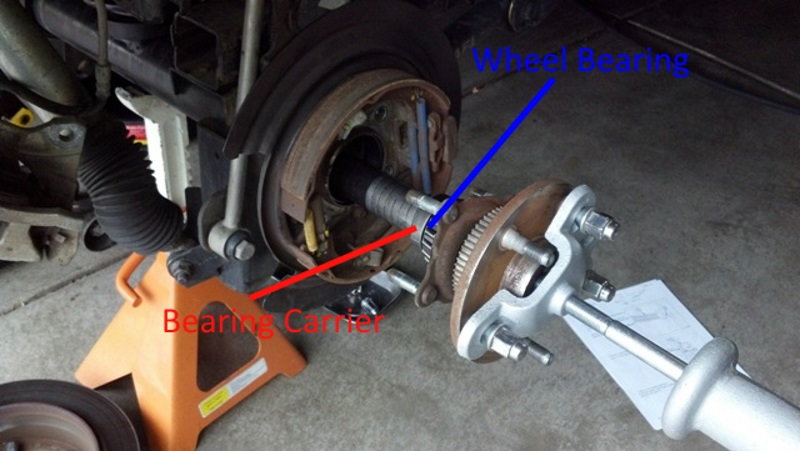
Step 8 – Re-install
Carefully slide the axle shaft back into the axle tube. Torque the four axle shaft nuts to 75 ft/lbs. Re-install the emergency brake cable eye loop and wheel speed sensor. Install the rotor back onto the axle, and then the caliper bracket. Torque the two caliper bracket bolts to 75 ft/lbs. Re-install your wheel and torque the lug nuts to 100 ft/lbs.
Featured Video: How to Replace Wheel Bearings on Jeep (Rear)
Related Discussions
- Wheel Bearings Bad - JK-Forum.com
- Wheel Bearings - JK-Forum.com




